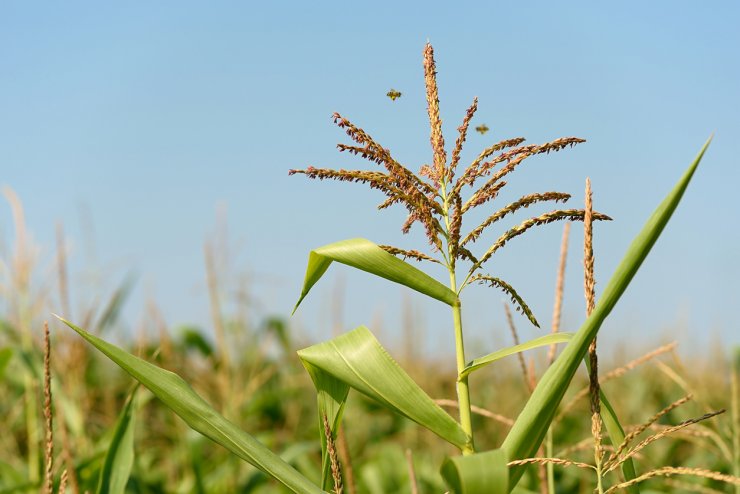
Inflorescence of corn plant
In theory, corn plants can pollinate themselves—but you’ll be far more successful if you give them some help. Corn plants have both male and female parts. Because corn is a grass, its flowers—the male part—grow in the form of tassels. This part blooms at the top of the stalk. As the tassel ripens, it sends the pollen down to the fronds, where the female parts are located. Their flowers are the silks. Each strand of silk is attached to a kernel of corn.
Pollination happens when pollen touches the strand of silk. But—surprise! Most of an ear’s pollination, 97%, comes from other corn plants. This is why it’s important to know when and how to pollinate corn.
There are two main ways to pollinate corn:
- Wind Method: The wind is the natural corn pollinator, lifting the pollen from the ears of one plant on a summer breeze and depositing it gently on other plants. Proximity of corn plants is key to wind pollination. This is why home gardeners should plant their corn in blocks of at least four rows instead of one or two long rows. To avoid cross-pollination, plant different varieties of corn 150 feet or more apart, or time your planting so the varieties tassel two weeks apart.
- Hand-Pollinating Method: This method takes more of the gardener’s time, but it’s fun! Watch for the tassels to be fully open and shedding their yellow pollen. This happens two to three days before the silk emerges. As soon as the silk appears, it’s time to start pollinating. In the morning—or evening before dewfall—snap the tassels off a few of the ears and dust them over the emerging silks. Repeat this every morning (or evening) for a week, starting at the opposite ends of the rows each time so you distribute the pollen evenly.
Have you faced any challenges with pollinating your corn plants? How do you handle ensuring the right pollination for your plants? Please share your experience with pollinating your corn in the comment section below


 Previous
Previous

